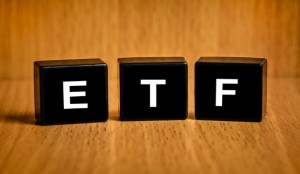 Most ETFs (Exchange Traded Funds) are index funds that trade as securities. The S&P 500 is an index that measures the performance of 500 large capitalization U.S. securities. A mutual fund creates an index by investing in the same 500 securities in the same proportions. The index fund tracks the performance of the index (S&P 500) with a small tracking error.
Most ETFs (Exchange Traded Funds) are index funds that trade as securities. The S&P 500 is an index that measures the performance of 500 large capitalization U.S. securities. A mutual fund creates an index by investing in the same 500 securities in the same proportions. The index fund tracks the performance of the index (S&P 500) with a small tracking error.
An ETF duplicates the process of the index fund. It also buys the same 500 stocks as the S&P. And, like the index fund, it duplicates the performance of the S&P 500 plus or minus a small tracking error.
Why ETFs?
First of all there are more than 1,700 ETFs that invest almost $2 trillion. This is an established alternative that is used by millions of investors.
They are a low cost method for capturing the performance of particular asset classes like large capitalization U.S. stocks (S&P 500). And, because they trade like securities you have eliminated the hassle of trading with the mutual fund families or exchanges of mutual funds.
You, your personal financial advisor, or a Robo Advisor selects the ETFs for you. A small percentage of advisors recommend them. The automated platforms of the Robos invest almost exclusively in ETFs.
- Small Asset Amount
You have a small amount of assets. Your only advisor choice is a stock broker or insurance agent who sells investment and insurance products for commissions. Your other alternative may be a relatively inexperienced Investment Advisor Representative who maintains a low minimum asset requirement while he goes through a substantial learning curve.
You can avoid the commission sales rep by using the low cost services of a Robo Advisor who invests in ETFs.
- Simple Requirements
ETFs are an easy, low cost way to invest in the securities markets. This could be a good choice if you have relative simple requirements from a planning and investment point of view. There is no reason to pay for years of financial knowledge and advice if you don’t need them.
Investors with more complex requirements can also invest in them, but you may have larger asset amounts and needs that require more sophisticated solutions.
- Age-Related Risk
You may want to use an actively managed ETF investment strategy while you are young. This is a riskier strategy than a portfolio of indexed ETFs, but younger investors can afford to take more risk than older investors. Your strategy focuses on investing in the right asset classes versus the right securities.
- Reduced Investment Risk
Actively managed mutual funds charge premium fees on the basis they will outperform their respective markets. They take increased risk to make this happen. Or, you can use an indexed ETF strategy that matches the performance of the market and you avoid the additional risk of trying to beat the market.
- Technology Savvy
An ETF strategy that is executed by a Robo Advisor, who provides an automated online investment process, may work for you. In particular, if you believe technology-based investment principles can produce better results than Wall Street research and personal financial advisors.
Other posts from Jack Waymire
Paladin’s Registry of Financial Advisors is a Free Service for Investors
The world’s first financial advisor directory was the Yellow Pages®. All you had to do was thumb through...
How to Find the Best Financial Advisors
Your first step is to determine the criteria you will use to identify and select the best financial...
What is an Investment Performance Benchmark?
A Benchmark is a performance goal. Your advisor is paid to produce results that beat the performance of...



